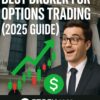Markets Price in Aggressive Fed Cuts Amid Recession Fears and Global Selloff
Markets went into freefall on Monday as President Donald Trump doubled down on his tariff threats, showing no signs of compromise on his aggressive trade agenda. With risk assets bleeding and investors scrambling for safety, the prospect of a U.S. recession is no longer theoretical—markets are betting it’s imminent.
Global Equities Slide, Futures Trigger Alarms
- S&P 500 futures dropped nearly 5%, while Nasdaq futures plunged 5.7%, continuing a brutal drawdown that erased $6 trillion in value last week.
- The Dow, Nasdaq, and S&P 500 are now deep in correction territory.
- Asian and European markets also fell sharply, with safe-haven flows pushing government bond yields lower and gold easing on profit-taking.
Fed Pivot Becomes the Market’s Lifeline
- Futures markets now price in nearly five Fed rate cuts in 2025, with the first potentially as early as May.
- 10-year Treasury yields sank to 3.90%, while Fed funds futures jumped on speculation of an emergency Fed pivot.
- JPMorgan now expects the Fed to cut at every meeting through January, taking the top end of the Fed funds target range down to 3.0%.
“The size and disruptive impact of U.S. trade policies, if sustained, would be sufficient to tip a still healthy U.S. and global expansion into recession,”
— Bruce Kasman, JPMorgan
Dollar Dives, Yen and Franc Surge on Safe-Haven Demand
- The USD weakened broadly, falling:
- 1% against the Japanese Yen (145.16)
- 1.45% against the Swiss Franc (0.8484)
- EUR/USD climbed to 1.1005, while the Aussie dollar dropped another 0.5%, reflecting concerns for trade-exposed economies.
Gold Retreats Amid Liquidity Squeeze
Even the usual safe-haven, Gold, couldn’t escape the carnage—falling 0.3% to $3,026/oz as investors sold assets to cover losses and margin calls elsewhere.
Corporate Earnings Under Threat
With the Q2 earnings season kicking off this week, analysts warn of profit margin compression due to rising input costs from tariffs:
“Tariff hikes will force many companies to either raise prices or accept lower margins,”
— Goldman Sachs, warning of downward revisions to profit expectations.
Many companies are also unlikely to offer forward guidance amid growing uncertainty, further clouding the market outlook.
Conclusion: A Tipping Point for Markets
The global market plunge marks a turning point, with investors no longer hoping for de-escalation but instead bracing for prolonged economic turbulence. Tariffs are now seen not just as a geopolitical tool—but a potential recession trigger. Unless there’s a dramatic policy shift, the Fed may be forced to step in more aggressively, and markets will remain in a high-volatility regime as both inflation and growth risks loom large.











